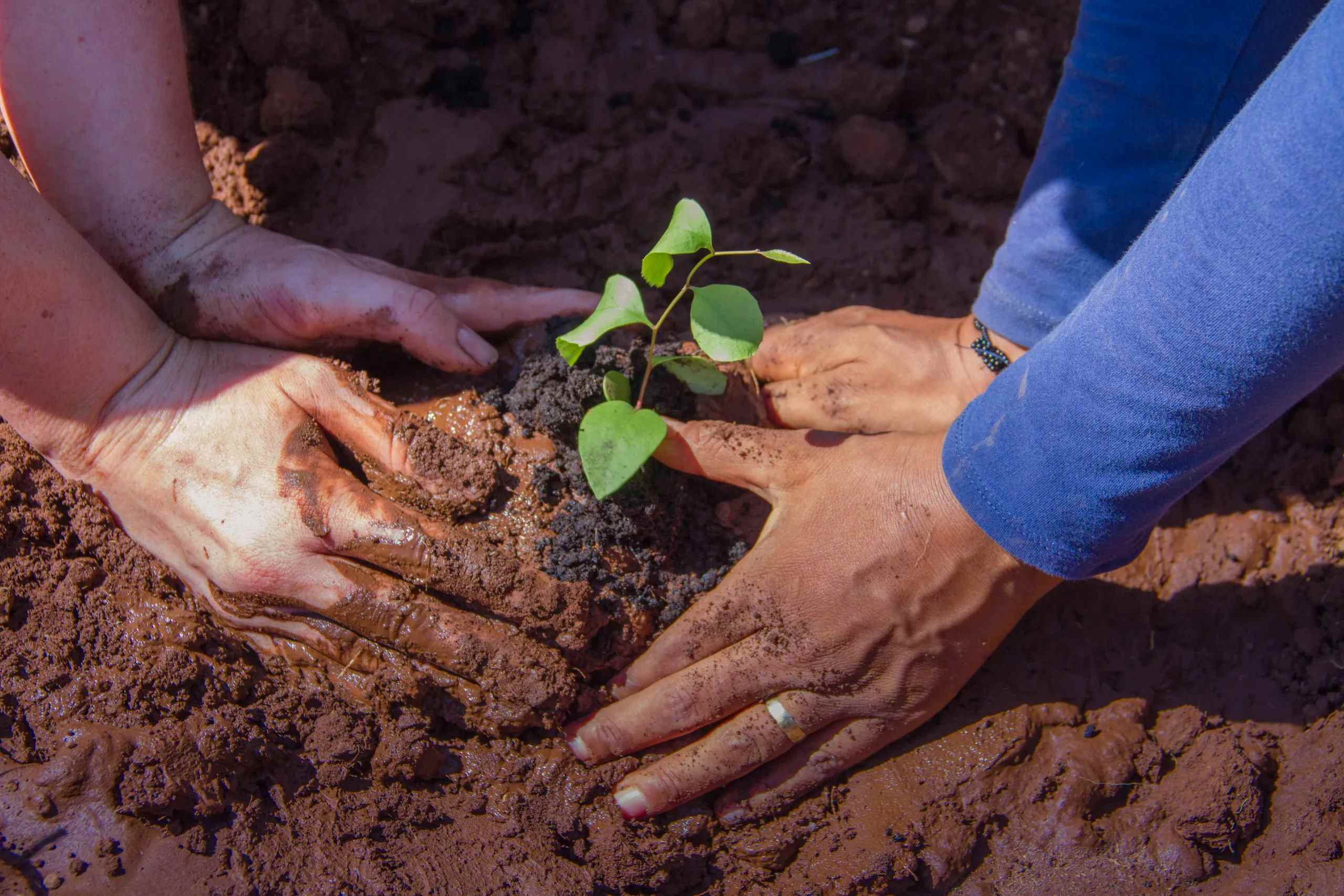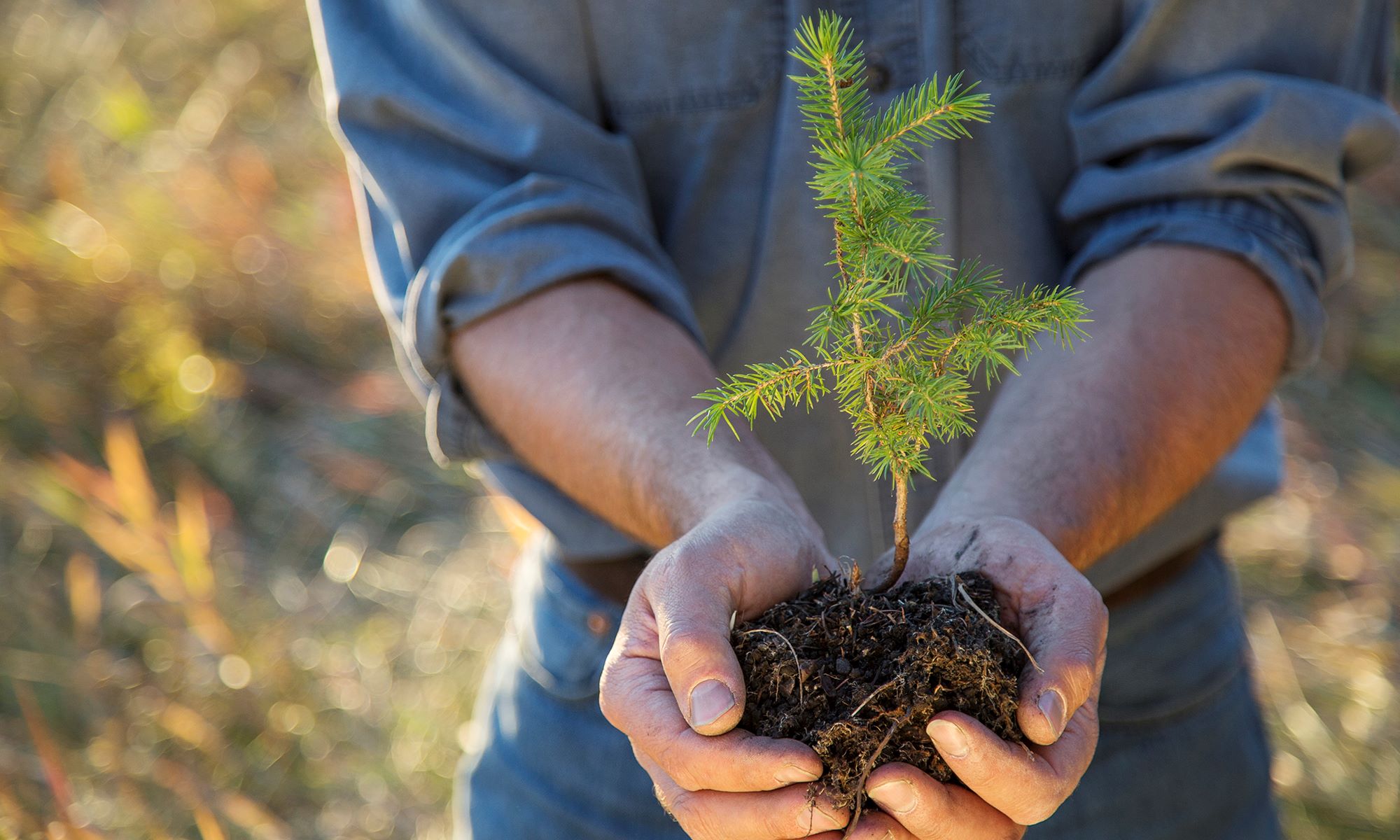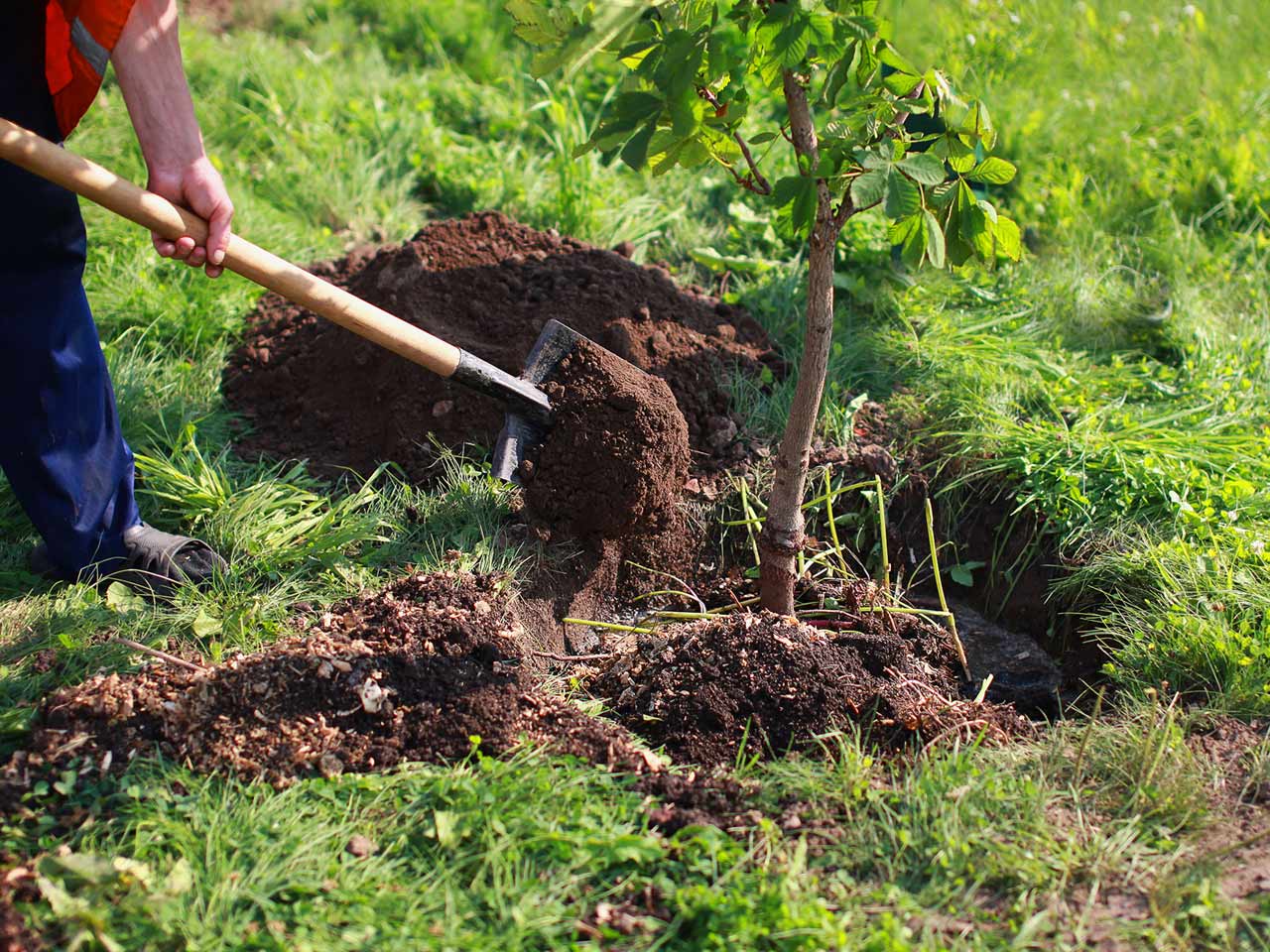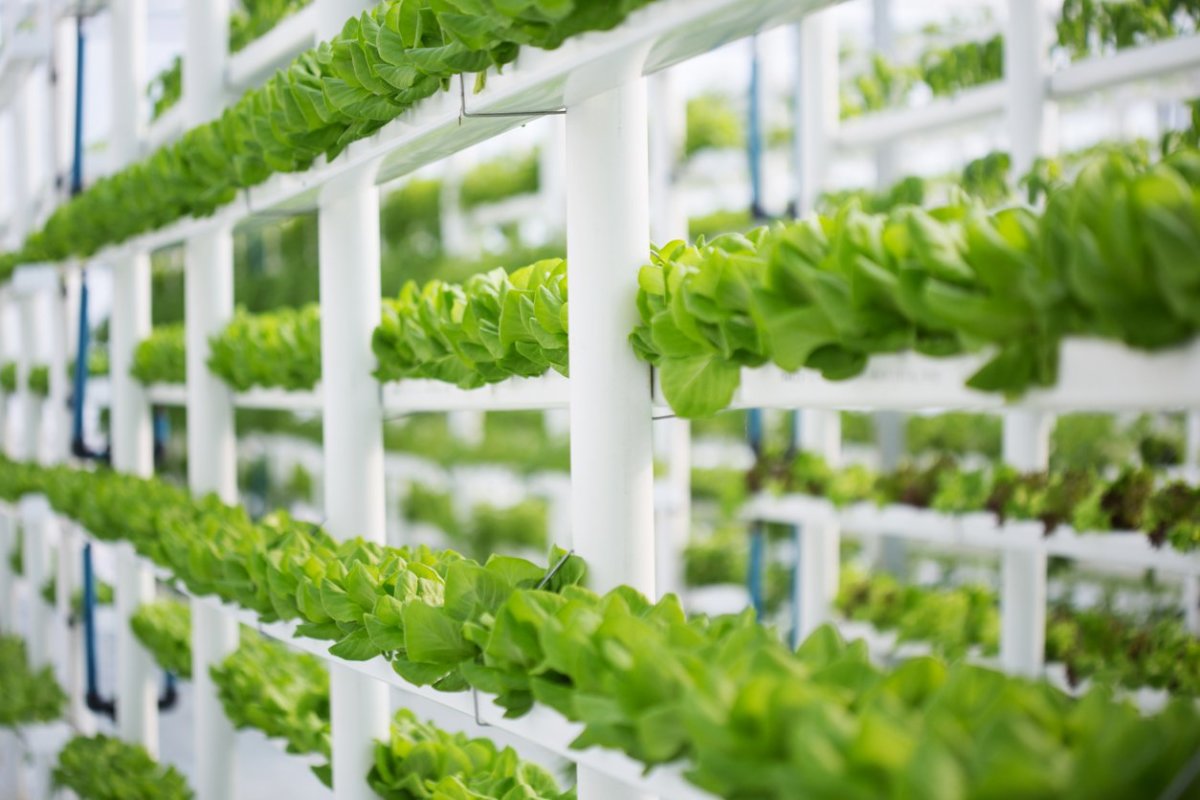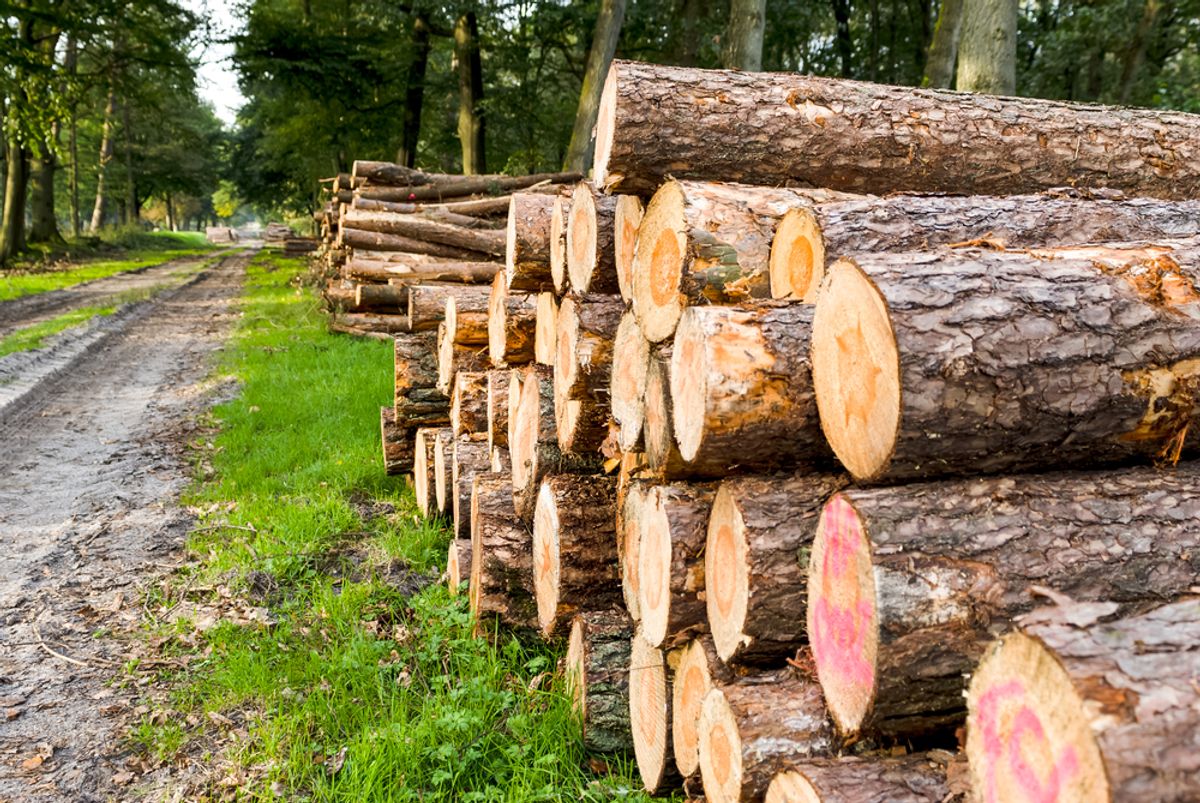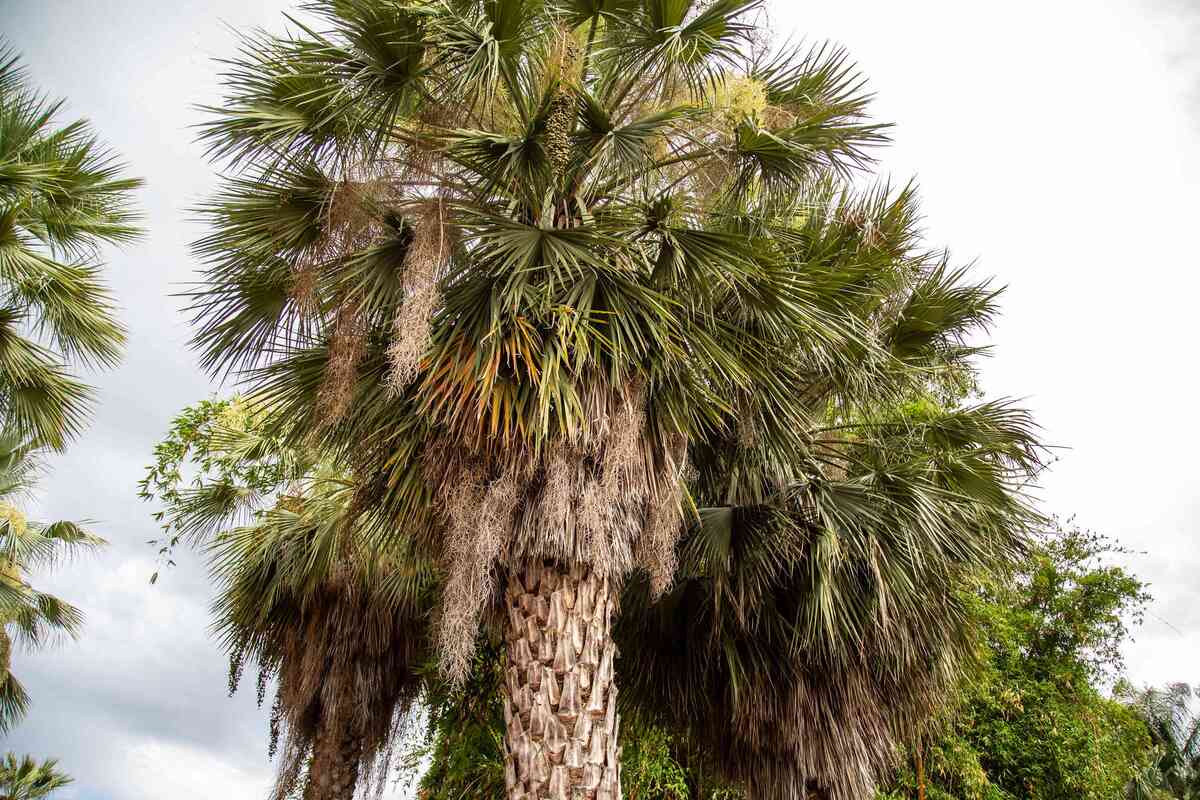Home>Gardening Tips and Tricks>Eco-Friendly Gardening>How Does Planting Trees Reduce Climate Change
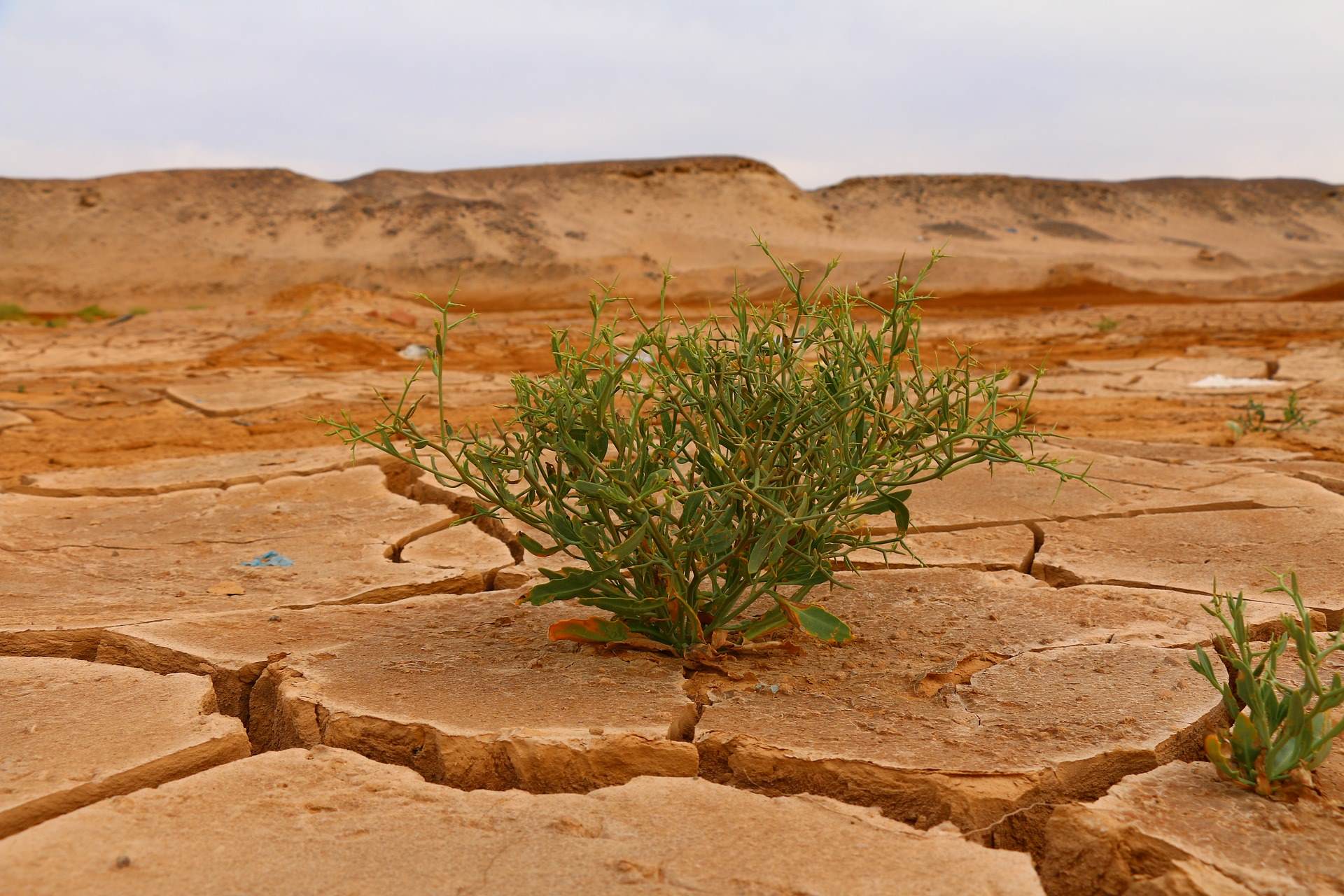

Eco-Friendly Gardening
How Does Planting Trees Reduce Climate Change
Modified: January 22, 2024
Discover how eco-friendly gardening and planting trees can effectively reduce climate change and contribute to a sustainable future.
(Many of the links in this article redirect to a specific reviewed product. Your purchase of these products through affiliate links helps to generate commission for Chicagolandgardening.com, at no extra cost. Learn more)
Table of Contents
- Introduction
- The Role of Trees in Climate Change Mitigation
- Trees and Carbon Sequestration
- Trees as Natural Air Filters
- Trees and the Water Cycle
- Trees as Habitat for Biodiversity
- Economic and Social Benefits of Planting Trees for Climate Change
- Challenges and Considerations in Tree Planting Initiatives
- Conclusion
Introduction
Welcome to the world of eco-friendly gardening! In today’s rapidly changing world, where climate change has become one of the most pressing issues of our time, it is crucial that we take steps to mitigate its effects. One powerful and accessible solution lies in eco-friendly gardening practices, particularly in the context of planting trees. Trees play a vital role in reducing climate change and creating a more sustainable future.
Planting trees not only beautifies our surroundings but also contributes significantly to mitigating the adverse effects of climate change. Trees act as natural air filters, sequester carbon dioxide, regulate the water cycle, and provide habitat for biodiversity. In addition, they offer numerous economic and social benefits that enhance the well-being of communities around the world. However, there are also challenges and considerations that need to be addressed when implementing tree planting initiatives.
In this article, we will explore the multifaceted ways in which trees can reduce climate change and discuss the benefits and challenges of planting trees for a greener and more sustainable future. Whether you are a seasoned gardener or just beginning your journey into eco-friendly practices, this article will provide you with valuable insights into the importance of trees in the fight against climate change.
The Role of Trees in Climate Change Mitigation
Trees play a crucial role in mitigating climate change by acting as natural carbon sinks. Through a process called photosynthesis, trees absorb carbon dioxide from the atmosphere, converting it into oxygen and storing carbon in their leaves, branches, trunks, and roots. This process is known as carbon sequestration, and it helps to reduce the concentration of greenhouse gases in the atmosphere.
By planting more trees, we can increase the Earth’s forest cover and enhance its capacity to capture and store carbon. This is particularly important because carbon dioxide is one of the main contributors to global warming. The more trees we have, the more carbon dioxide they can absorb, helping to slow down the rate of climate change.
Furthermore, trees can also help regulate temperature through a process called evapotranspiration. As trees lose water through their leaves, it evaporates into the atmosphere, creating a cooling effect. This not only reduces the need for artificial cooling methods but also helps counteract the urban heat island effect, where cities tend to be hotter than their surrounding rural areas.
In addition to their role in carbon sequestration and temperature regulation, trees also play a crucial role in preserving and restoring ecosystems. They act as a natural barrier against soil erosion, prevent flooding by absorbing excess water, and filter pollutants from rainwater. By protecting and restoring forests, we can maintain the balance of ecosystems, supporting the diverse flora and fauna that rely on these habitats.
Overall, trees are a vital component in mitigating climate change. Their ability to sequester carbon, regulate temperature, and preserve ecosystems make them essential allies in our fight against climate change. By understanding and promoting the role of trees, we can make significant strides in creating a more sustainable future.
Trees and Carbon Sequestration
Carbon sequestration, the process by which carbon dioxide is removed from the atmosphere and stored in long-term storage, is a crucial mechanism in mitigating climate change. Trees play a significant role in this process as they absorb carbon dioxide during photosynthesis and store it within their tissues.
When trees are young and actively growing, they have the highest rate of carbon uptake. As they mature, the rate of carbon absorption slows down, but they continue to store carbon throughout their lifespan. This means that older trees still contribute to carbon sequestration, albeit at a lower rate compared to younger trees.
Forests, both natural and man-made, are important carbon sinks because of the vast amount of trees they contain. The world’s forests collectively store a significant amount of carbon, making them an invaluable resource in fighting climate change. However, it’s worth noting that deforestation and forest degradation can lead to the release of stored carbon back into the atmosphere, exacerbating global warming.
Furthermore, different tree species have varying capacities to sequester carbon. Some species have faster growth rates and can accumulate carbon more rapidly, while others store carbon for longer periods. It’s important to consider the specific characteristics of tree species when planning tree planting initiatives to maximize their carbon sequestration potential.
Urban trees also play a role in carbon sequestration by offsetting carbon emissions from human activities. By strategically planting trees in urban areas, we can create green spaces that not only provide aesthetic benefits but also contribute to cleaner air and reduced carbon dioxide levels.
In recent years, there has been a growing awareness of the importance of reforestation and afforestation projects as nature-based solutions to climate change. These initiatives aim to restore and expand forest cover to enhance carbon sequestration and mitigate global warming. By planting trees and protecting existing forests, we can increase the capacity to remove carbon dioxide from the atmosphere and contribute to a more sustainable future.
Trees as Natural Air Filters
Trees are not just beautiful to look at; they also serve as natural air filters, improving air quality and reducing pollution. Through the process of photosynthesis, trees absorb carbon dioxide and release oxygen, helping to purify the air we breathe. But the benefits of trees on air quality go far beyond this basic exchange.
One of the major air pollutants that trees help to remove is particulate matter. Particulate matter consists of tiny airborne particles, such as dust, pollen, soot, and smoke, which can have detrimental effects on human health when inhaled. Trees act as a natural filter, trapping these particles on their leaves and bark, preventing them from being inhaled by humans.
In addition to trapping particulate matter, trees also absorb other airborne pollutants, such as nitrogen dioxide, ozone, and sulfur dioxide. These pollutants are released by various human activities, including vehicle emissions and industrial processes. By capturing and storing these pollutants, trees help to reduce their concentration in the air, improving overall air quality.
Urban areas can benefit greatly from the presence of trees as natural air filters. In cities, air pollution tends to be more concentrated due to the higher levels of traffic and industrial activity. By planting trees in urban environments, we can effectively mitigate the negative effects of air pollution and create healthier living spaces for residents.
Research has shown that the presence of trees in urban areas can lead to a reduction in respiratory illnesses, cardiovascular diseases, and other health complications associated with poor air quality. Trees provide shade, regulate temperature, and create a more pleasant and inviting environment, encouraging outdoor activities and physical exercise, which further contribute to overall well-being.
Moreover, trees can help to combat the phenomenon known as the heat island effect in urban areas. Pavements and buildings absorb and re-emit heat, leading to higher temperatures in cities compared to the surrounding rural areas. Trees provide natural shade and cooling through evapotranspiration, reducing the need for energy-intensive air conditioning and lowering carbon emissions.
In summary, trees act as natural air filters, playing a crucial role in improving air quality by capturing and storing airborne pollutants. Their presence in urban areas can help combat air pollution-related health issues and mitigate the heat island effect. By planting more trees, we can create cleaner and healthier environments for ourselves and future generations.
Trees and the Water Cycle
Trees play a vital role in regulating the water cycle, which is crucial for maintaining a balance in our ecosystems. The water cycle refers to the continuous movement of water between the Earth’s surface, the atmosphere, and back again. Trees actively participate in this cycle, influencing rainfall patterns, groundwater recharge, and preventing soil erosion.
One of the key ways trees impact the water cycle is through transpiration. Transpiration is the process by which trees release water vapor into the atmosphere through their leaves. As trees take up water from the soil through their roots, the water travels up the trunk and branches, eventually evaporating from the leaf surfaces. This process helps to increase humidity and contributes to the formation of clouds and rainfall.
By releasing water vapor, trees influence local climate patterns, helping to generate rainfall and maintain moisture levels in the environment. This is particularly important in regions prone to drought or experiencing water scarcity, as trees can act as natural moisture regulators, promoting a more balanced water cycle.
In addition to influencing rainfall patterns, trees also play a crucial role in preventing soil erosion. The roots of trees help to stabilize the soil, reducing the risk of runoff and soil loss. When heavy rains occur, trees absorb a significant amount of water, preventing it from flowing directly over the surface of the soil. This allows the water to slowly enter the ground, replenishing groundwater sources and reducing the risk of flooding.
Trees also act as natural sponges, soaking up excess water and releasing it gradually into the soil. This helps to maintain soil moisture levels, ensuring a steady supply of water for other plants and organisms in the ecosystem. Furthermore, the shade provided by trees helps to reduce evaporation rates and conserve water, particularly in hot and arid climates.
The presence of trees along rivers and streams is vital for maintaining water quality and protecting water ecosystems. Tree roots help to filter pollutants, such as sediment and chemicals, preventing them from entering waterways and damaging aquatic ecosystems. Trees also provide shade, which helps to regulate water temperature, creating optimal conditions for aquatic life.
In summary, trees play a significant role in the water cycle by influencing rainfall patterns, preventing soil erosion, and providing moisture regulation. By planting and protecting trees, we can contribute to the sustainable management of water resources and help mitigate the impacts of drought, flooding, and water pollution.
Trees as Habitat for Biodiversity
Trees are not only essential for their environmental benefits, but they also serve as vital habitats for a wide range of plant and animal species. From the tiniest insects to magnificent birds and mammals, trees provide shelter, food, and breeding grounds for countless organisms, contributing to the overall biodiversity of our planet.
The complex architecture of trees, with their branches, leaves, and trunks, offers various microhabitats and niches for different species to thrive. Dead or decaying trees, for example, provide valuable habitat and food sources for fungi, insects, and other decomposers. These organisms aid in the breakdown of organic matter and nutrient cycling, which in turn supports the overall health of ecosystems.
Within the canopy of trees, a wealth of species can be found. Birds build nests among the branches, utilizing the height and shelter that trees provide. Many tree-dwelling mammals, such as squirrels and koalas, rely on trees for both shelter and a food source. In tropical rainforests, the immense biodiversity found in the canopy is crucial to the overall functioning of these ecosystems.
The presence of trees also attracts a diverse range of insects, which serve as pollinators for flowers and play a critical role in the reproduction of many plant species. Trees provide nectar, pollen, and habitats for bees, butterflies, and other pollinating insects, facilitating the pollination process and ensuring the survival of countless plant species.
Furthermore, trees contribute to the formation of forest ecosystems, which are among the most biologically diverse habitats on Earth. Forests provide a complex network of interdependent relationships, with trees acting as the backbone of these ecosystems. They provide shade, moisture, and organic matter for the growth of understory plants, creating a rich and diverse array of plant life.
Protecting and preserving trees as habitats for biodiversity is crucial for the overall health of ecosystems. As human activities continue to encroach upon natural habitats, it becomes even more vital to create and maintain green spaces that offer refuge for wildlife. By planting native tree species and safeguarding existing forests, we can promote biodiversity conservation and ensure the survival of countless plant and animal species.
In summary, trees act as complex and diverse habitats for a wide range of plant and animal species. From providing shelter and food sources to enabling pollination and supporting forest ecosystems, trees play a crucial role in maintaining biodiversity and the intricate web of life on our planet.
Economic and Social Benefits of Planting Trees for Climate Change
The planting of trees for climate change not only provides environmental advantages but also offers significant economic and social benefits. Investing in tree planting initiatives can lead to job creation, improved livelihoods, enhanced public health, and increased community resilience.
One of the notable economic benefits of tree planting is the generation of green jobs. Planting and maintaining trees require a skilled workforce, providing employment opportunities for local communities. These jobs can range from tree planting and care to tree nursery management and urban forestry. By investing in these green jobs, tree planting initiatives can contribute to poverty reduction and economic growth.
In addition, trees can have a positive impact on property values and create economic value for communities. Studies have shown that neighborhoods with a higher density of trees have higher property values and increased economic vitality. Trees provide aesthetic appeal and shade, making neighborhoods more attractive and improving the quality of life for residents.
Furthermore, trees can contribute to energy savings and reduce costs associated with cooling and heating. Properly placed trees provide shade in summer, reducing the need for air conditioning. In winter, trees act as windbreaks and provide insulation, reducing heating requirements. These energy-saving benefits can translate into significant cost savings for households and businesses.
Planting trees also has important social benefits. Green spaces with trees offer opportunities for recreational activities, promoting physical and mental well-being. Access to green areas has been linked to reduced stress levels, improved mood, and increased overall happiness. Trees create a sense of community and provide gathering spaces for social interactions, fostering a sense of belonging and connection among residents.
Trees can also contribute to improved public health. They help to filter air pollutants, reducing the risk of respiratory problems and improving air quality. The shade provided by trees can mitigate the effects of heatwaves, reducing heat-related illnesses and deaths. Moreover, exposure to nature has been shown to have a positive impact on mental health, enhancing cognitive function and reducing stress.
Additionally, tree planting initiatives can strengthen community resilience in the face of climate change impacts. Trees can act as natural buffers against extreme weather events, such as hurricanes and flooding, absorbing excess water and reducing the risk of soil erosion. They can also provide shade and cooling in urban areas, helping to alleviate the heat island effect and mitigate the impacts of rising temperatures.
In summary, planting trees for climate change offers numerous economic and social benefits. From green job creation and increased property values to improved public health and community resilience, investing in tree planting initiatives can have far-reaching positive impacts for both local and global communities.
Challenges and Considerations in Tree Planting Initiatives
While tree planting initiatives have many benefits, there are also challenges and considerations that need to be addressed to ensure their success and sustainability.
One of the key challenges is selecting the appropriate tree species for the given environment. Factors such as soil type, climate conditions, and local biodiversity need to be taken into account to ensure that the chosen species are well-suited for the area. The selection of non-native or invasive species can have negative consequences, disrupting local ecosystems and impacting native flora and fauna.
Another challenge is ensuring the long-term survival and maintenance of newly planted trees. It is essential to establish proper care and maintenance practices, including watering, mulching, and protecting trees from pests and diseases. Communities and volunteers involved in tree planting initiatives may require training and resources to effectively care for the trees and ensure their growth and survival.
Securing sufficient funding and resources for tree planting projects can also be a challenge. Planting and maintaining trees can be costly, especially on a large scale. Collaborations with government agencies, non-profit organizations, and private entities can help to secure funding and resources needed for the success of tree planting initiatives.
Land availability and land use planning must also be considered. In urban areas, finding suitable spaces for planting trees can be limited due to infrastructure, development, and competing land uses. Creative solutions such as rooftop gardens, vertical forests, and community gardens can help overcome this challenge and maximize the potential for tree planting in urban environments.
Community engagement and education are critical to the success of tree planting initiatives. It is important to involve local communities in the planning, implementation, and maintenance of tree planting projects. Providing education about the benefits of trees, tree care practices, and the importance of biodiversity can foster a sense of ownership and long-term commitment to the project.
Lastly, monitoring and evaluation play a crucial role in tree planting initiatives. Regular monitoring is necessary to assess the survival and growth rates of planted trees, as well as their impact on carbon sequestration, air quality improvement, and biodiversity conservation. Evaluation helps to identify areas of improvement and refine future tree planting efforts.
In summary, tree planting initiatives are not without their challenges. From species selection and maintenance to funding and community engagement, various considerations need to be taken into account. By addressing these challenges proactively and implementing best practices, we can overcome obstacles and ensure the success and long-term sustainability of tree planting initiatives.
Conclusion
Planting trees is a powerful and accessible way to combat climate change and create a more sustainable future. Trees act as natural carbon sinks, sequestering carbon dioxide from the atmosphere and reducing greenhouse gas concentrations. They also play a crucial role in regulating temperature, maintaining the water cycle, and providing habitat for biodiversity.
In addition to their environmental benefits, tree planting initiatives offer numerous economic and social advantages. From job creation and increased property values to improved public health and community resilience, trees contribute to the well-being of individuals and communities.
However, tree planting initiatives also face challenges and considerations. Selecting appropriate tree species, ensuring long-term maintenance, securing funding and resources, and engaging communities are crucial factors in the success of these initiatives. By addressing these challenges and implementing best practices, we can overcome obstacles and maximize the benefits of tree planting projects.
It is important for individuals, communities, governments, and organizations to embrace the importance of trees in mitigating climate change and fostering sustainable development. By planting trees in both urban and rural areas, we can make a positive impact on our environment, economy, and society.
As individuals, we can contribute by planting trees in our own yards or supporting local tree planting initiatives. Governments can provide incentives and policies that promote tree planting and protection. Organizations and businesses can invest in tree planting projects and collaborate with communities to achieve collective goals.
Together, we have the power to make a significant difference in the fight against climate change and create a greener and more sustainable future. Let us embrace the beauty and benefits of trees, and work hand in hand to promote tree planting initiatives for a thriving and resilient planet.


